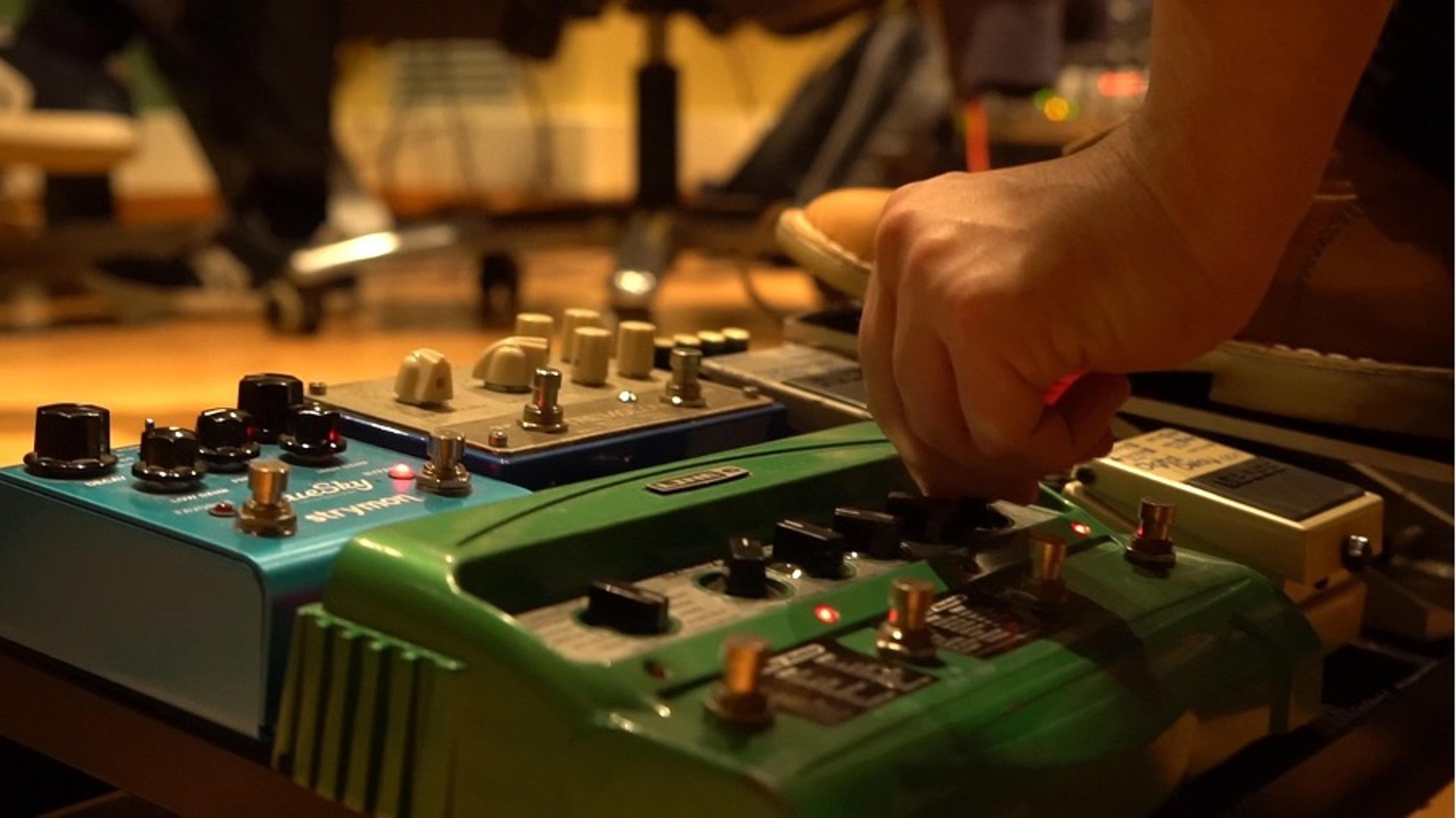Here are some things you can do, most of them quite inexpensive, to get the very best from your guitar.
Change the strings:
Over time, guitar strings can become worn and lose their brightness. Changing your strings regularly can help improve the sound of your guitar.
If you are very short of money, you can boil your strings in water which will get rid of some of the muck that collects from your hands, especially on the wound bass strings. It is quite surprising how much this brightens up a tired old set of strings.
If you’re replacing your strings, don’t be tempted, especially on an electric guitar, to buy the very lightest super-duper extra skinny strings.
Whilst these are a little easier on the fingers you do lose a certain amount of tone with very light strings. Jimi Hendrix used to play with really quite heavy strings, and he sounded pretty good.
Adjust the action:
The action is the distance between the strings and the fretboard.
If the action is too high the guitar becomes almost impossible to play and the strings slice up your fingers, too low and the strings foul the frets causing buzzing and dead spots i.e. where a note won’t ring out) when you’re playing.
Check the neck alignment:
Check this out by pressing down the bass E string on the first fret and on the fret nearest to the bridge and you should see that the neck of the guitar mimics the straight line of the string.
If it is excessively bowed, then before you look at the string height checkout the Truss rod adjustment which will bring the neck bend back into true. trust word adjustment it’s really outside of the scope of this article, but majority of guitars have means to adjust the neck profile using an Allen wrench which tightens or loosens the metal trust rod that runs through the length of the neck. Here is a video that explain this better.
Adjust the string length:
String length is also key as this will affect the intonation of the guitar. If the intonation is out then as you play notes up the fret board, for example, you will not get an exact octave at the 12th fret, and the guitar will sound progressively out of tune the further up the neck you play.
Guitar bridges have adjustments using other small screw or in some cases a wheel to adjust string height either on a string-by-string braces or to generically raise and lower the bridge from either end.
Clean your guitar:
Overtime dirt can build up on the frets which should be cleaned off to enable a good contact between strings and the fret board. This helps make note ring out strong and loud.
Be careful with using any domestic cleaning products.
There are specialised products for cleaning guitar frets and fret boards which are great and not too expensive. It makes a huge difference to how the neck of the guitar feels and, I think improves speed at which you can navigate the neck.
Tune your guitar:
Now we can get to tuning!
Make sure your guitar is properly tuned. Use an electronic tuner or a tuning app to help you get the correct pitch.
Excessively worn strings do not stay in tune readily. It is very easy to blame the guitar for not staying in tune when it’s purely worn-out strings to blame.
Also, the way the strings are threaded through the machine heads must be correct in order that they do not slip and again cause tuning problems.
Your technique:
it might sound obvious but listen to how you sound!
Do you inadvertently deaden notes and not let them ring out? Should you be experimenting with playing with a pick if you use your fingers or vice versa and experiment with different pick weights and materials.
Of course, practising is important getting strong fingers that press the strings hard against the fret board for a nice clean sound is important and a bit of a struggle sometimes, but this is what sets the good and the great apart.
Use pedals:
Depending upon your influences and what you want to sound like, then guitar effects pedals can help enormously.

They can:
- Create ambiance.
- Make the guitar sound like it’s being played through a really loud amplifier.
- Make a guitar send like there are several guitars being played at once – typically chorus and echo type of effects.
These are just a couple of examples of what pedals might do to help improve guitar sound.
There are, of course multitude of pedals on the market which do all sorts of things from basic effects as outlined above to more outlandish and experimental effects.
So, in conclusion, most people don’t need to spend a fortune to get their guitar sounding that little bit better and playing a little bit easier and faster.



Comments are closed.